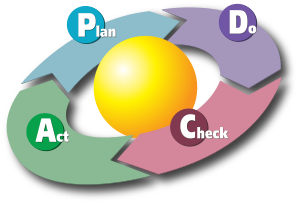Continuous Improvement as the basis of the Audit
Juran and Godfrey (2001) deserve to be highlighted in this area when they consider that: Continuous improvement is increasingly necessary for economic survival in the global economy and
is becoming a widely pursued goal.


Continuous Improvement and ISO Standards
PHVA Cycle
The conclusions of the audit, included in the above-mentioned report, should cover the degree of conformity with the audit criteria and the implementation, maintenance and The effectiveness of the organization's GSC to achieve the proposed objectives, as well as management's commitment to the improvement process, and the identification of the causes of the findings found that were set out in the audit plan.
Reflections by way of Conclusion
In this sense, the ISO Standards are a valuable tool in the national and international field, offering a varied and complete range to work in the SGC, not only for its conception and implementation but also its implementation, evaluation and monitoring
Bibliographic Reference
This work is an extract of my article published in the Industrial Engineering Magazine. Year 5, Vol. III, N° 9
ISSN: 1856-8327 link

If you want to be part of an excellent project where you can share content related to machine learning,
cybersecurity, economy, business, marketing, social media, artificial intelligence, blockchain technology, psychology, robotics, philosophy, cryptocurrencies, among others; I invite you to join this community, here I provide you with some links:
Project HOPE
3 WAYS OF JOINING OUR EFFORTS + PROJECT "HOPE" ECONOMY EXPLAINED
PROJECT.HOPE application for the COMMUNITY CURATOR PROJECT of Steemit
Note:
The separator is of my property, as well as the banner corresponding to the farewell both made with own images made with the application Paint.
Thank you for reading me and commenting.







Following those ISO standards guarantee quality and represent a very important added value, and that is why they earn preference and a high reputation among those who follow them.
Hi @reinaldoverdu
That's right, they are actually considered part of the key to organizational success. Thank you for visiting and commenting
@tipu curate
Upvoted 👌 (Mana: 4/20) Passive income with @tipU :)
Excellent friendly publication. Improvement is always important in any aspect of our lives, and if it is to meet standards or rules much more. I think that by not following the established rules is that we are the world we are today, but well that's another issue hehe! Greetings!
That's right friend, thanks for visiting and commenting